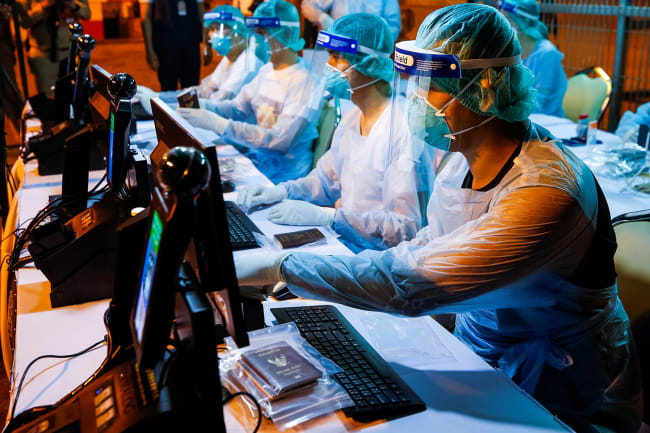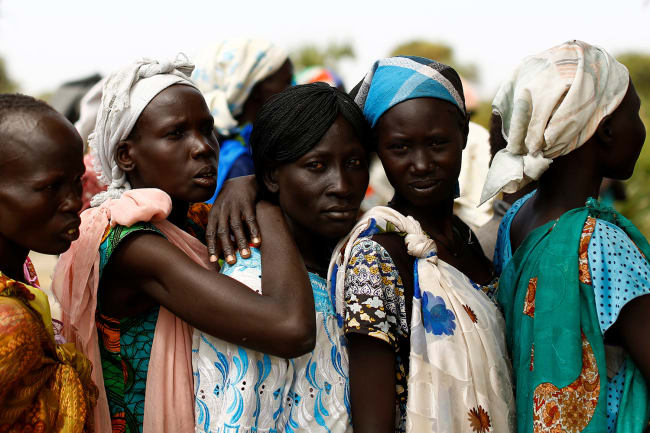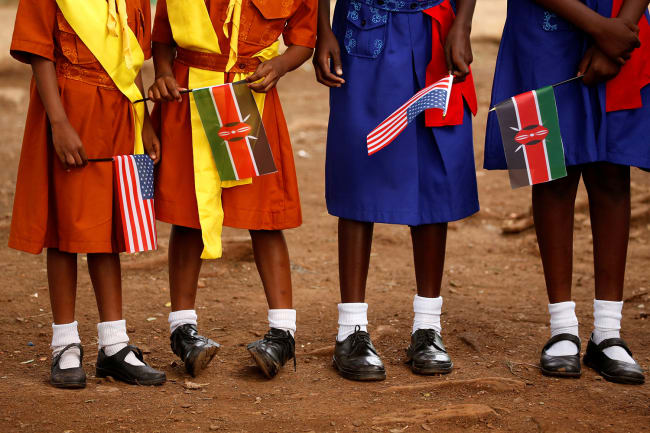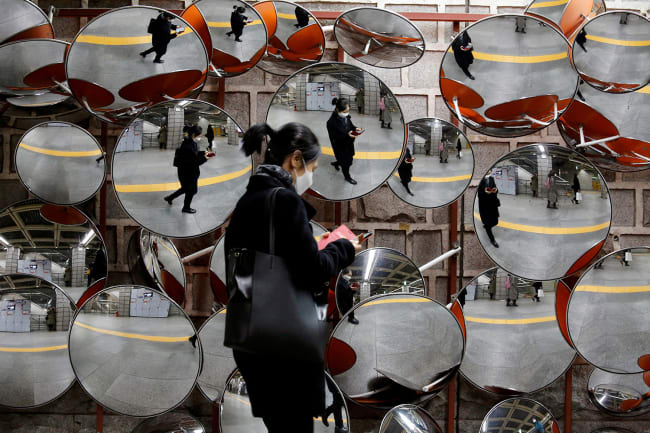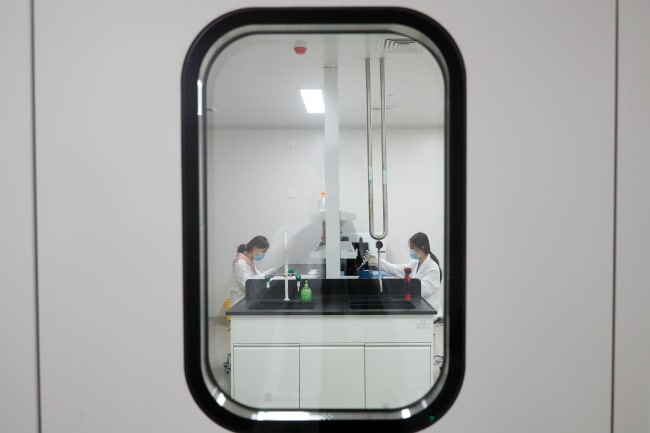Whenever a high-profile health emergency breaks out or an influential commission needs experts, it seems global health reverts to the default of delivered by women, led by men. The message seems to be Health emergency! Step aside, ladies – men coming through. Although women make up 70 percent of the global health workforce, and although they work at all levels in health security—from the front lines of healthcare, to research labs, to health policy circles – they have not been represented equally in decision-making bodies that are informing our COVID-19 responses.
In January, just five women were invited to join the twenty-one member WHO Emergency Committee on the novel coronavirus
A presidential tweet showed the first iteration of the U.S. Coronavirus Task Force was composed entirely of men. In January, just five women were invited to join the twenty-one member WHO Emergency Committee on the novel coronavirus.
Unrelated to this decision, UN Secretary General Antonio Guterres made a strong public statement a few weeks later. "Women's inequality should shame us all. Because it is not only unacceptable; it is stupid," Guterres said in February. "Only through the equal participation of women can we benefit from the intelligence, expertise and insights of all of humanity."
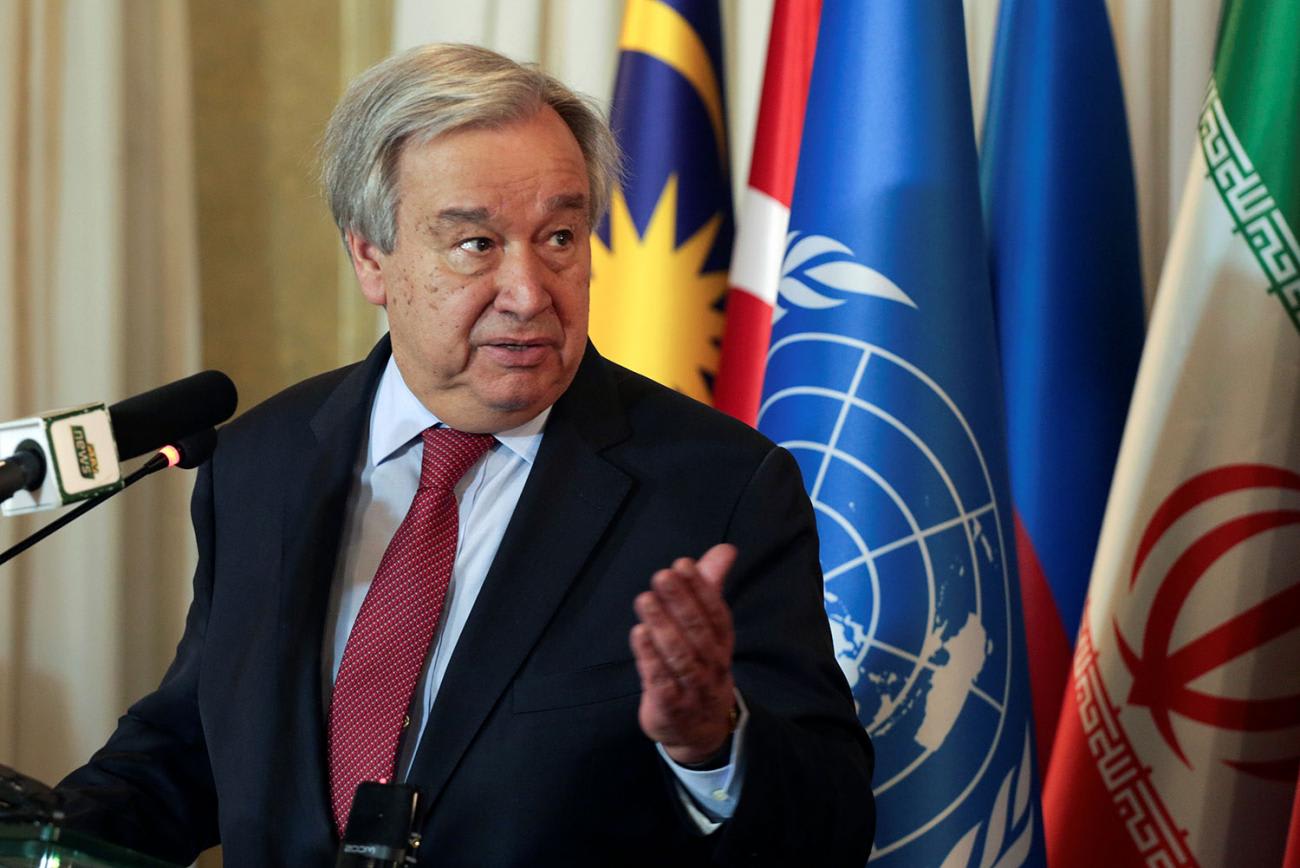
There is a huge contingency of global health experts who are also women, but they are not being called upon to lead responses to this global health emergency—and this puts us all at risk. Ignoring women's expertise and perspectives undermines health security for everyone.
Six reasons why gender matters in global health security:
NUMBER ONE: Strong COVID-19 responses draw leaders from the entire talent pool. Women are 70 percent of the global health workforce but hold only 25 percent of senior decision-making roles. Excluding women from decision making robs health systems of the knowledge and expertise of the health workers who know these systems best. In America, which has a mostly-male Coronavirus Task Force, women have become the majority of young doctors and epidemiologists. Including women (and women from diverse groups and geographies) is about effectiveness and saving lives, not just representation. Diverse leadership groups make better, more informed decisions.
Women are 70 percent of the global health workforce but hold only 25 percent of senior decision-making roles
NUMBER TWO: Women are needed to fill the global shortage of health workers, which limits our ability to respond to health emergencies. As the majority of the global health and social workforce, women currently deliver health care to around five billion people. Female health workers are central to the response to any epidemic. The women health workers on the front lines of health systems do not want to be sentimentalized or celebrated as martyrs. They want to lead, they want to be listened to and they want the means to do their jobs professionally, safely and with dignity. Around half of all health workers are nurses and midwives. As the International Year of the Nurse and the Midwife, what better time than 2020 to harness the expertise and leadership potential of nurses and midwives?
A 2019 WHO report concluded, however, that although women are the majority in the health and social workforce, they are clustered into lower status, lower-paid (and unpaid) roles and frequently subject to discrimination, bias and sexual harassment, which can cause them harm, limit their career growth, and cause attrition. With a projected global shortage of around forty million health and social workers by 2030—eighteen million needed in vulnerable low-income countries alone—the world must invest urgently in decent work for female health workers and enable them to fulfil their potential in all areas, including leadership. That is our best chance of retaining female health workers and scaling up the global health workforce to meet demand and the challenges of epidemics and pandemics.
Worldwide Gender Breakdown of One Vital Health Profession
The percentages of female and male nurses in different regions of the world are shown here
NUMBER THREE: Women's political voices strengthen health systems for better health security—now and in the future. Women do not have an equal say at political level in most countries on critical issues like health budgets and universal health coverage. Globally, women are only 24 percent of the parliamentarians who make decisions on health systems funding and coverage.
Countries with strong national health systems and universal health coverage are better able to cope with outbreaks and other health emergencies
If women did have an equal say in political decisions on health, research suggests health systems would be stronger as female parliamentarians are more likely to give [PDF] greater priority to health. This matters now more than ever; countries with strong national health systems and universal health coverage are better able to cope with outbreaks and other health emergencies. Without strong health systems that make care affordable and accessible, the most vulnerable—older people, pregnant women, the homeless, the poor, and those with pre-existing conditions and poor health status (the majority of whom are women)—will be missed by critical outbreak response activities such as widespread testing and treatment. Ultimately, this hinders containment of infectious diseases like COVID-19.

NUMBER FOUR: Women and men have different, socially defined roles—and this perpetuates inequalities and weakens health security. Women carry out the majority of care for sick family and community members, and that puts women at greater risk of contracting infections like COVID-19. At the same time, women's role as household caregivers can be leveraged for better health promotion and disease prevention/management at the family and community levels—but only if they are empowered with accurate information and the means to support the sick. COVID-19 was initially associated with a particular food market in Wuhan, China, where it is likely that the majority of traders were women. After the SARS outbreak in China in 2002, women in the same professions could have been vital allies in the cultural and behavioral change needed to avert a new viral outbreak—but clearly, this opportunity was missed. In many country contexts women are less educated than men, have less access to digital technology, and are generally overlooked as potential change agents.
NUMBER FIVE: Biology and gender determinants of health affect the way disease is transmitted and progresses. Data are still being collected and analysed, but early figures from the COVID-19 outbreak in China show higher mortality among men than women, especially in older age groups.
Early figures from the COVID-19 outbreak in China show higher mortality among men than women, especially in older age groups
One hypothesis is that higher smoking rates by men leaves them more susceptible to respiratory viruses like SARS-CoV-2, which causes COVID-19. There are other gender-related aspects of the disease that are virtually unknown—for example, we still need to understand how COVID-19 affects pregnant and breastfeeding women in order to protect both women and the unborn child. A different virus, Zika, if contracted by a pregnant woman, does serious harm to the unborn child. Nothing similar has been reported with COVID-19, but this example show that it is critical that policy responses to epidemics examine the impact of both biological sex and the gender determinants of health.
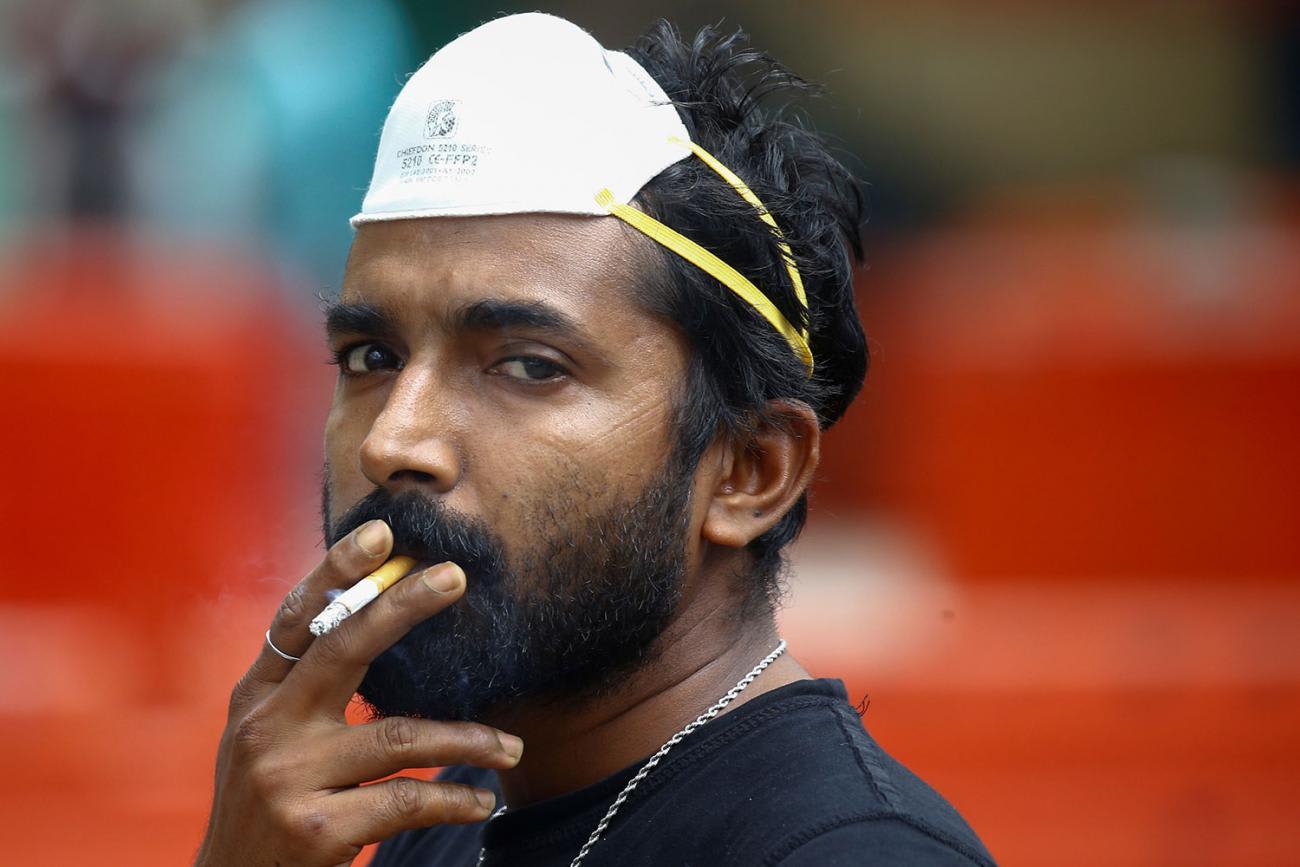
NUMBER SIX: Global health rests on the foundation of women's unpaid work. Here's an uncomfortable fact: women in health contribute an estimated 5 percent to global GDP ($3 trillion), of which almost 50 percent is unrecognised and unpaid. Some of the world's poorest women and girls are effectively subsidising health systems and missing out on opportunities to enter education and the formal labor market. This is not only inequitable—it weakens global health security everywhere. Infectious diseases like COVID-19 do not respect national borders, and we are all only as safe as people in the weakest national health system. Women's unpaid work needs to be recorded, redistributed (within the family and community) and rewarded, with women enabled to transition into paid formal sector employment.
We cannot fight a global health challenge like this by drawing from just half the talent pool
This week, Women in Global Health was proud to launch COVID 50/50, our campaign for a more inclusive pandemic responses, which includes fives asks for more gender-responsive health security. These asks build on Operation 50/50—a crowdsourced list of women health security experts, designed to be a resource for organizations looking for health security experts and media commentary on COVID-19. The current pandemic makes it clear: it's time to acknowledge that the gender stereotypes and bias keeping women out of leadership and decision making put us all at risk. We cannot fight a global health challenge like this by drawing from just half the talent pool. We cannot win this fight with one hand tied behind our backs.
Leading Global Health but not Global Health Leadership
Key statistics showing a disparity between parts of the global health workforce and its leadership
Sources for the table: (1), (2), (3), (4), (5), (6), (7), and (8)
EDITOR'S NOTE: The authors are associated with the nonprofit organization Women in Global Health, mentioned in the last paragraph, one of them (R.D.) as its executive director and co-founder.

